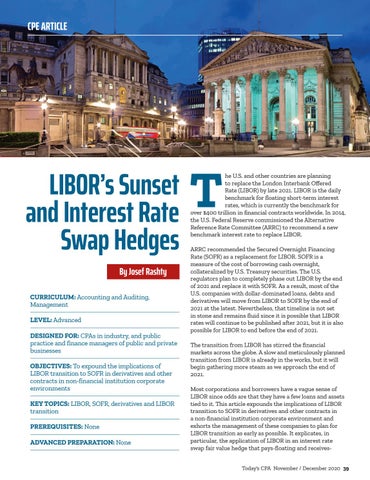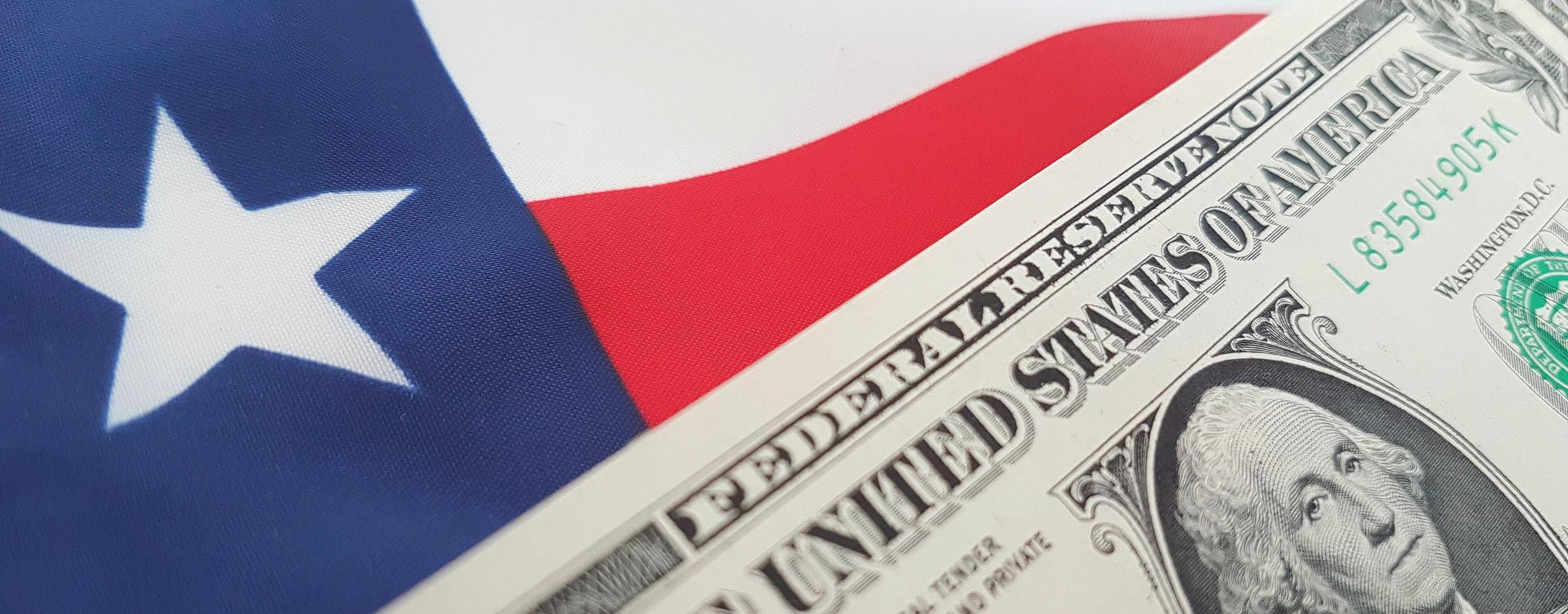CPE ARTICLE
LIBOR’s Sunset and Interest Rate Swap Hedges By Josef Rashty CURRICULUM: Accounting and Auditing, Management LEVEL: Advanced DESIGNED FOR: CPAs in industry, and public practice and finance managers of public and private businesses OBJECTIVES: To expound the implications of LIBOR transition to SOFR in derivatives and other contracts in non-financial institution corporate environments KEY TOPICS: LIBOR, SOFR, derivatives and LIBOR transition PREREQUISITES: None ADVANCED PREPARATION: None
T
he U.S. and other countries are planning to replace the London Interbank Offered Rate (LIBOR) by late 2021. LIBOR is the daily benchmark for floating short-term interest rates, which is currently the benchmark for over $400 trillion in financial contracts worldwide. In 2014, the U.S. Federal Reserve commissioned the Alternative Reference Rate Committee (ARRC) to recommend a new benchmark interest rate to replace LIBOR. ARRC recommended the Secured Overnight Financing Rate (SOFR) as a replacement for LIBOR. SOFR is a measure of the cost of borrowing cash overnight, collateralized by U.S. Treasury securities. The U.S. regulators plan to completely phase out LIBOR by the end of 2021 and replace it with SOFR. As a result, most of the U.S. companies with dollar-dominated loans, debts and derivatives will move from LIBOR to SOFR by the end of 2021 at the latest. Nevertheless, that timeline is not set in stone and remains fluid since it is possible that LIBOR rates will continue to be published after 2021, but it is also possible for LIBOR to end before the end of 2021. The transition from LIBOR has stirred the financial markets across the globe. A slow and meticulously planned transition from LIBOR is already in the works, but it will begin gathering more steam as we approach the end of 2021. Most corporations and borrowers have a vague sense of LIBOR since odds are that they have a few loans and assets tied to it. This article expounds the implications of LIBOR transition to SOFR in derivatives and other contracts in a non-financial institution corporate environment and exhorts the management of these companies to plan for LIBOR transition as early as possible. It explicates, in particular, the application of LIBOR in an interest rate swap fair value hedge that pays-floating and receivesToday's CPA November / December 2020 39













